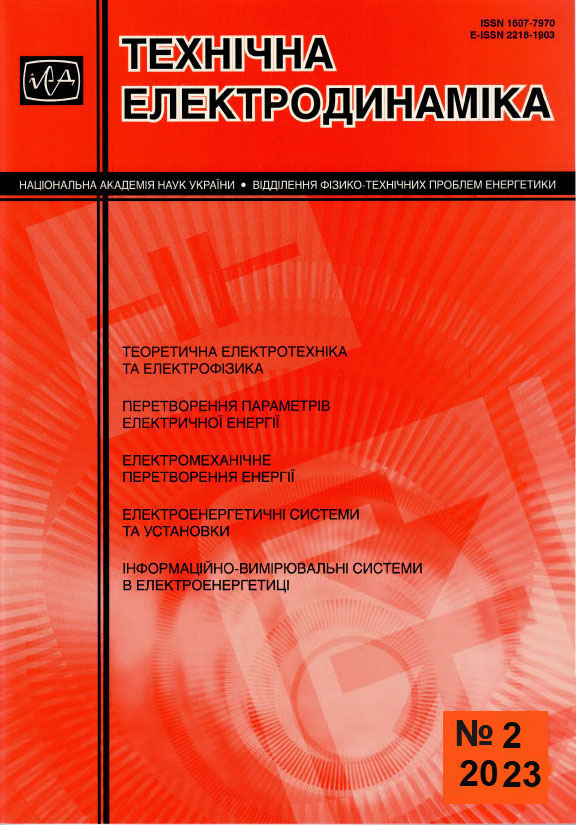Abstract
The article proposes the further development of a method of reducing the error of measuring local changes in the electrical conductivity of electrolyte solutions caused by a change in the background electrical conductivity of the measuring medium. Such an error occurs in differential conductometric biosensors with working and reference transducers, if their electrical parameters differ significantly. In contrast to the previously known, the described method takes into account the influence of near-electrode charge transfer resistances, which becomes especially noticeable when there is a significant difference in the values of these parameters of the converters. The goal is to ensure deep suppression of the influence of background changes in electrical conductivity of solutions under significant differences in the reactive and active component impedances of pairs of sensor transducers, including near-electrode charge transfer resistances. Mathematical expressions characterizing the process of bringing the bridge measuring circuit to a specific state of quasi-balance, in which the influence of changes in the background electrical conductivity of electrolyte solutions is minimal, are considered. Formulas for calculating the voltage parameters on the reference converter have been obtained, which make it possible to establish the indicated mode of the measuring circuit. A technique for determining the values of charge transfer resistances using the results of additional measurements of the impedance parameters of the converters at a frequency higher than the operating frequency is proposed. The results of research on suppressing the effect of changes in the background electrical conductivity of the solution in the differential conductometric channel using a computer model are presented, which showed the possibility of significantly reducing the effect of changes in the background electrical conductivity of the solution compared to the known method. References 9, figure 2, table 1.
References
Impedance Spectroscopy Theory, Experiment, and Application. Edited by Evgenij Barsoukov, Ross Macdonald. New Jersey: John Wiley & Sons Inc., 2005. 595 p.
Grossi M., Riccò B. Electrical impedance spectroscopy (EIS) for biological analysis and food characterization: a review. Journal of Sensors and Sensor Systems. 2017. Vol. 6. Issue 2. Pp. 303-325. DOI: https://doi.org/10.5194/jsss-6-303-2017.
Kolahchi N., Braiek M., Ebrahimipoura G., Ranaei-Siadatc S.O., Jaffrezic-Renaultb F.L.N. Direct detection of phenol using a new bacterial strain-based conductometric biosensor. Journal of Environmental Chemical Engineering. 2018. Vol. 6. Issue 1. Pp. 478-484. DOI: https://doi.org/10.1016/j.jece.2017.12.023.
Kell D.B., Dave C.L. Biosensors. A practical approach in Conductometric and Impediometric devices. Ed. by A.F. Gass. Oxford: IRL Press, 1990. Pp. 125-153.
Turner A.P.F., Karube I., Wilson G.S. Biosensors. Fundamentals and Applications. Oxford: Oxford University Press, 1990. 783 p.
Dzyadevych S.V., Arkhypova V.N., Korpan Y.I., Elskaya A.V., Soldatkin A.P., Jaffrezic-Renault N., Martelet C. Conductometric formaldehyde sensitive biosensor with specifically adapted analytical characteristics. Biopolymers and cell. 2005. Vol. 21 (2). Pp. 91-106.
Marrakchi M., Dzyadevych S.V., Lagarde F., Martelet C., Jaffrezic-Renault N.E. Conductometric biosensor based on glucose oxidase and beta-galactosidase for specific lactose determination in milk. Materials Science and Engineering. 2008. Vol. 28. Issue 5-6. Pp. 872-875. DOI: https://doi.org/10.1016/j.msec.2007.10.046
Dzyadevych S.V. Conductometric enzyme biosensors: theory, technology, application. Analytica Chimica Acta. 2001. No 445. Pp. 47-55. DOI: https://doi.org/10.1016/S0003-2670(01)01249-1.
Dzyadevich S.V., Soldatkin O.P. Scientific and technological principles of creating miniature electrochemical biosensors. Kyiv: Naukova dumka, 2006. 256 p. (Ukr)
Jaffrezic-Renault N., Dzyadevych S. Conductometric Microbiosensors for Environmental Monitoring. Sensors (Basel). 2008. Vol. 8(4). Pp. 2569-2588. DOI: https://doi.org/10.3390/s8042569.
Melnyk V.G., Vasylenko A.D., Semenycheva L.N., Slitskiy O.V., Saiapina O.Y., Dzyadevych S.V. Solutions for enhancement of sensitivity and metrological reliability of conductometric biosensor systems. Engineering Research Expres. 2021. Vol. 3. No 4. 045008. DOI: https://doi.org/10.1088/2631-8695/ac2a0d.
Melnyk V.G., Borshchov P.I., Vasylenko O.D., Brahynets I.O. Optimization of balancing in a bridge measuring circuit with a differential conductometric sensor. Tekhnicha Elektrodynamika. 2022. No 4. Pp. 78-88. DOI: https://doi.org/10.15407/techned2022.04.078.
Melnyk V.G., Borshchov P.I., Vasylenko O.D., Lameko O.L., Dzyadevych S.V. Determination of Faraday impedance parameters to increase accuracy in conductometry and obtain additional data. Sensor Electronics and Microsystem Technologies. Vol. 19. No 3. Pp. 38-52. (Ukr). URL: http://semst.onu.edu.ua/article/view/265297

This work is licensed under a Creative Commons Attribution-NonCommercial-NoDerivatives 4.0 International License.
Copyright (c) 2023 Array






